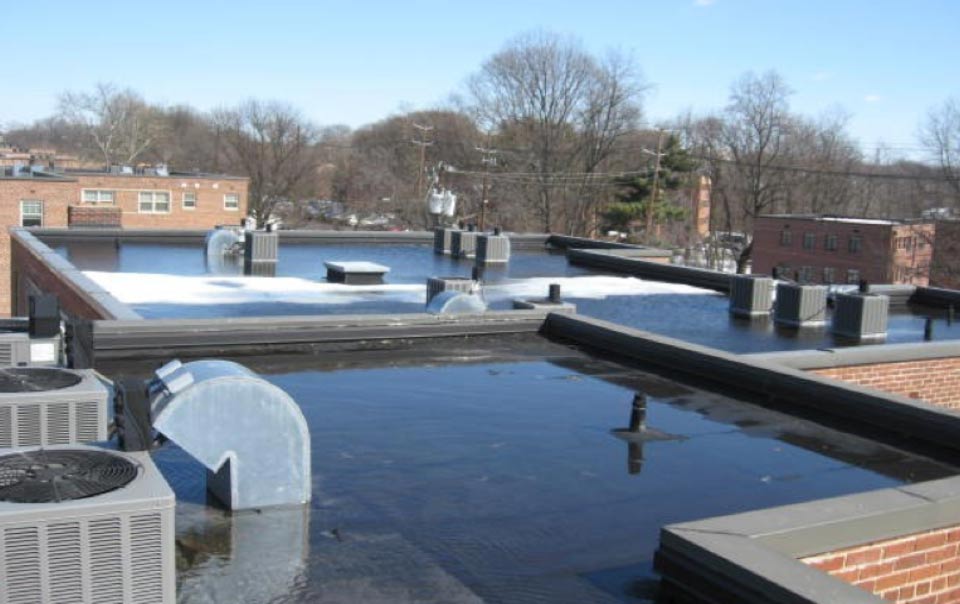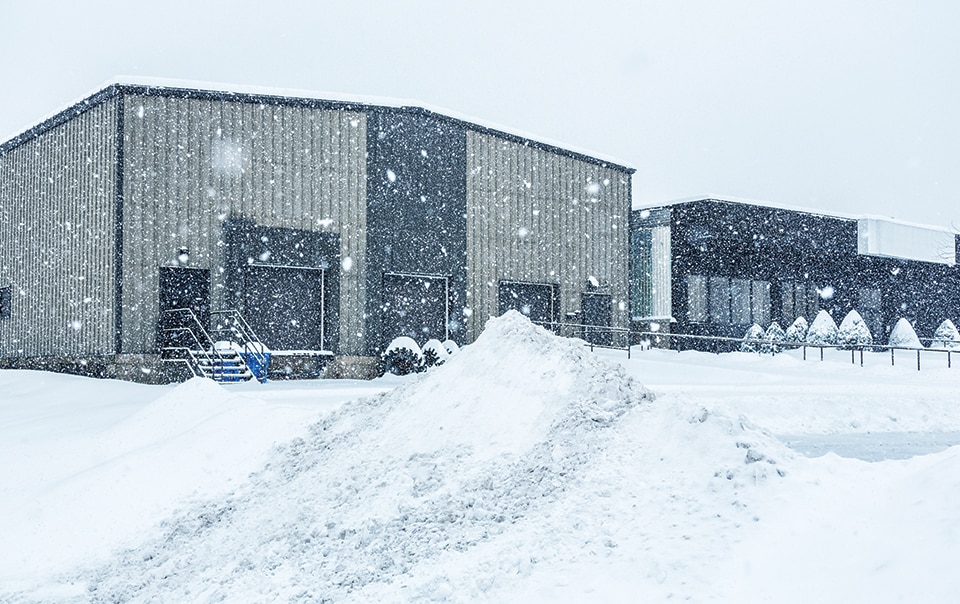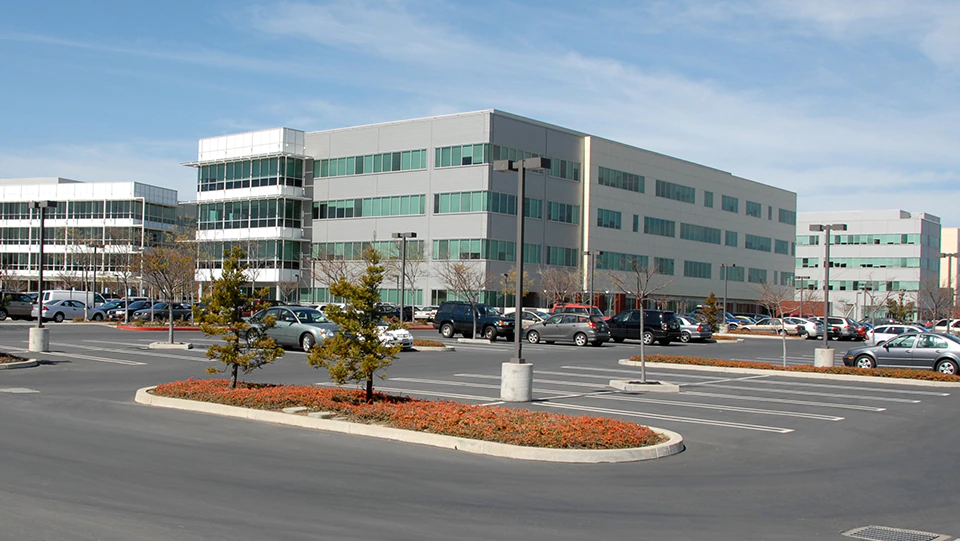How to Help Protect Against Roof Collapse

During the winter storm season, it is important to monitor weather conditions and roof conditions to help protect against roof collapse.
- Monitor snow and ice accumulation across the entire roof of all buildings, including the amount of snow drifting along long ridge lines or on lower roof levels. When it is safe to do so, implement the snow removal plan.

SNOW IMPACT ON THE ROOF
The depth is different, but the risk is similar
Danger zones:
4+ feet of light/dry snow is approximately equal to
1+ feet heavy/wet snow is approximately equal to
4+ inches of ice
During the Storm
- Be cautious of where snow is placed when removing it from the roof.
- Do not block building exits.
- Do not bury equipment such as fire hydrants, fire department connections, fire sprinkler control valves, or gas and other utility valves.
- Do not place piles where melting snow can cause seepage or flooding inside the building.
- Be aware that wet snow and ice are far heavier than fresh light snow and that the visible depth of the snow may be deceiving.
- Be aware of any warning signs that the building structure may be under significant stress and perhaps in danger of collapse. Signs may include:
- Deflection or cracking of structural members.
- Cracks that have recently developed in interior and exterior walls and ceilings.
- Cracked or broken windows.
- Sprinkler heads that are pushed down below dropped ceiling tiles.
- Unusual creaking or popping sounds.
- Doors or windows that bind or do not open and close properly due to cracked frames.
- If there are signs of deflection or damage to the building’s structure, a qualified structural engineer should be contacted for an immediate inspection. Building evacuation, temporary shoring or similar forms of support may be warranted. Shutting down and draining sprinkler systems and shutdown of gas mains may be advisable if the roof condition deteriorates and collapse is considered likely.
- Implement contingency plans if collapse is imminent or has occurred.
After the Storm
- Inspect your property for damage and implement your contingency plan.
- Prepare for the next storm and make changes to your snow removal and contingency plans as necessary.
- Report any damage and claims promptly to your insurance carrier or broker.



